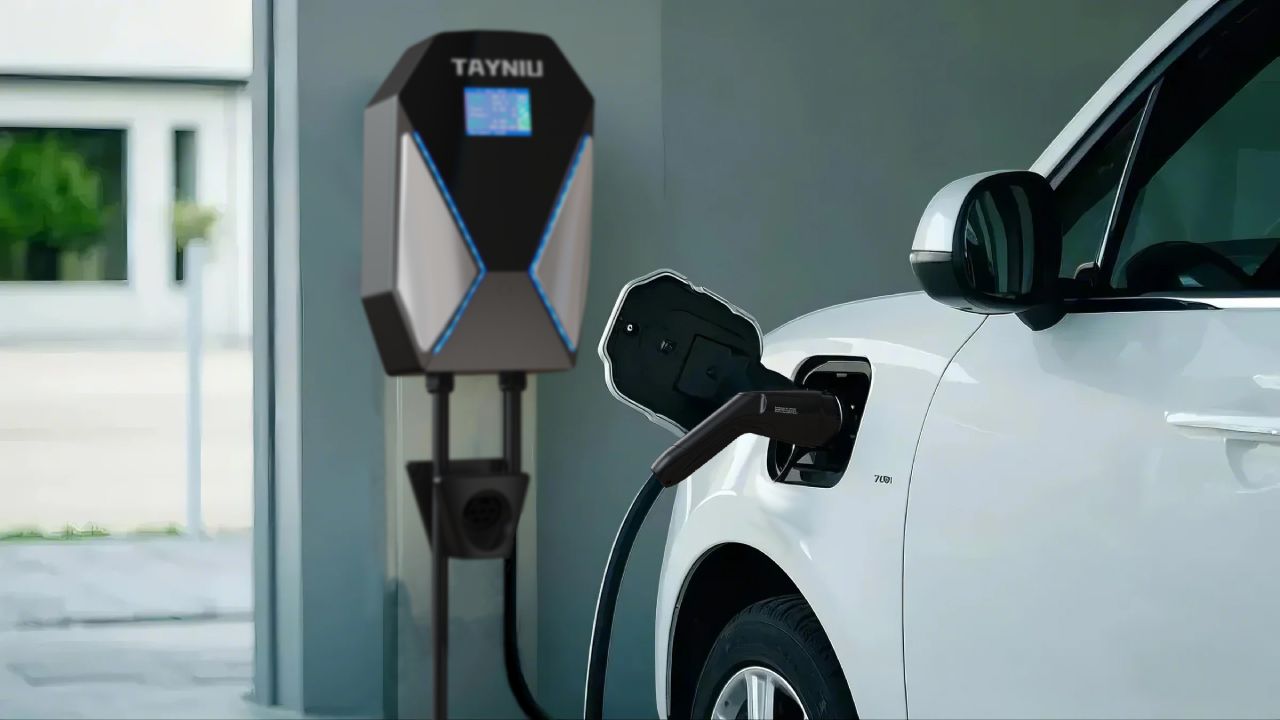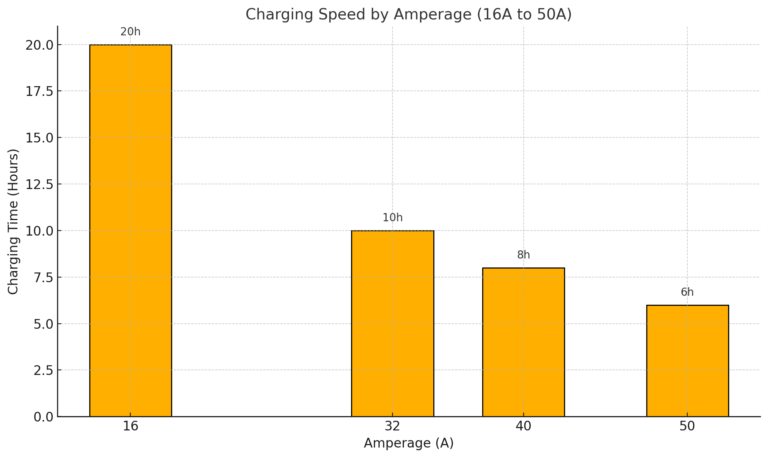How Many Amps to Charge an EV
Foreword
Understanding the amperage needed to charge your electric vehicle (EV) is crucial for efficient and safe charging. This comprehensive guide will help you navigate the various charging options and determine the optimal amperage for your specific needs.
Understanding EV Charging Basics
Before diving into specific amperage requirements, it’s important to understand that EV charging is measured in several ways:
- Amperage (A): The current flow
- Voltage (V): The electrical pressure
- Kilowatts (kW): The actual charging power (Amps × Volts ÷ 1000)

Common EV Charging Levels and Their Amperage Requirements
Level 1 Charging (120V AC)
- Standard household outlet
- Typically 12-16 amps
- Charging power: 1.3-1.9 kW
- Best for: Overnight charging, PHEVs, or EVs with smaller batteries
- Range added: 3-5 miles per hour of charging
For example, Megear Level 1 Portable EV Charger, AmazonBasics Level 1 EV Charger, and Tayniu Infinity Level 1 Portable EV Charger are good choices.
Level 2 Charging (240V AC)
- Dedicated home charging station or public charging point
- Common amperage ranges:
- 16 amps: 3.8 kW charging power
- 32 amps: 7.7 kW charging power
- 40 amps: 9.6 kW charging power
- 48 amps: 11.5 kW charging power
- 16 amps: 3.8 kW charging power
- Best for: Daily home charging, workplace charging
- Range added: 12-37 miles per hour of charging
For example, the Grizzl-E Classic Level 2 Charger, Emporia Smart EV Charger, and Tayniu SpeedyPro Home EV Charger are all good choices.
Level 3 Charging (DC Fast Charging)
- Public fast-charging stations
- 100-400 amps DC
- 50-350 kW charging power
- Best for: Long-distance travel
- Range added: 3-20 miles per minute of charging
If you need a business plan for electric vehicle charging, you can choose from the ABB Terra series, the EVBox Troniq Modular, or the emerging brand Tayniu.
How to Choose the Right Amperage for Your Home Charging Setup
Factors to Consider
- Your EV’s Maximum Charging Capacity
- Check your vehicle manual or visit our electric vehicle guide for maximum AC charging rates.
- Most modern EVs can accept 32-48 amps on Level 2
- Home Electrical System Capabilities
- Circuit breaker capacity
- Available panel space
- Service capacity (100A, 200A, etc.)
- Daily Driving Needs
- Average daily mileage
- Available charging time
- Typical charging patterns

Recommended Amperage by Usage Pattern
- Light Usage (< 30 miles/day)
- 16-20 amp circuit
- 3.8-4.8 kW charging power
- Sufficient for overnight recovery of daily miles
- Medium Usage (30-60 miles/day)
- 32 amp circuit
- 7.7 kW charging power
- A popular choice for most EV owners
- Heavy Usage (> 60 miles/day)
- 40-48 amp circuit
- 9.6-11.5 kW charging power
- Ideal for high-mileage drivers or larger battery EVs
Installation Considerations
Safety Requirements
- Circuit breaker sizing: 125% of continuous load
- Dedicated circuit required
- Professional installation recommended
- Local electrical code compliance
Cost Factors
- Higher amperage = Higher installation costs
- Equipment costs increase with amperage
- Potential electrical service upgrade needs
Practical Tips for Optimal Charging
- Future-Proofing
- Consider installing a higher amperage circuit than currently needed
- Allows for future EV upgrades
- Provides charging flexibility
- Energy Management
- Schedule charging during off-peak hours
- Monitor charging patterns
- Adjust amperage based on needs
- Multiple EV Considerations
- Load sharing capabilities
- Circuit sizing for multiple vehicles
- Smart charging solutions
Conclusion
Choosing the right amperage for your EV charging setup is a balance between your vehicle’s capabilities, home electrical system, and daily driving needs. While a 32-amp circuit (delivering 7.7 kW) is sufficient for most users, consider your specific situation when making this decision. Remember that professional installation and future-proofing are key to a successful home charging setup.
For most homeowners, we recommend:
- Minimum: 16-amp circuit (3.8 kW)
- Standard: 32-amp circuit (7.7 kW)
- Optimal: 40-48 amp circuit (9.6-11.5 kW)
Tayniu can provide you with the best solution for home charging with quick contact!
Tips: Always consult with a qualified electrician and your EV manufacturer’s specifications before deciding on your charging setup.
Last Updated on December 24, 2024 by tayniu
